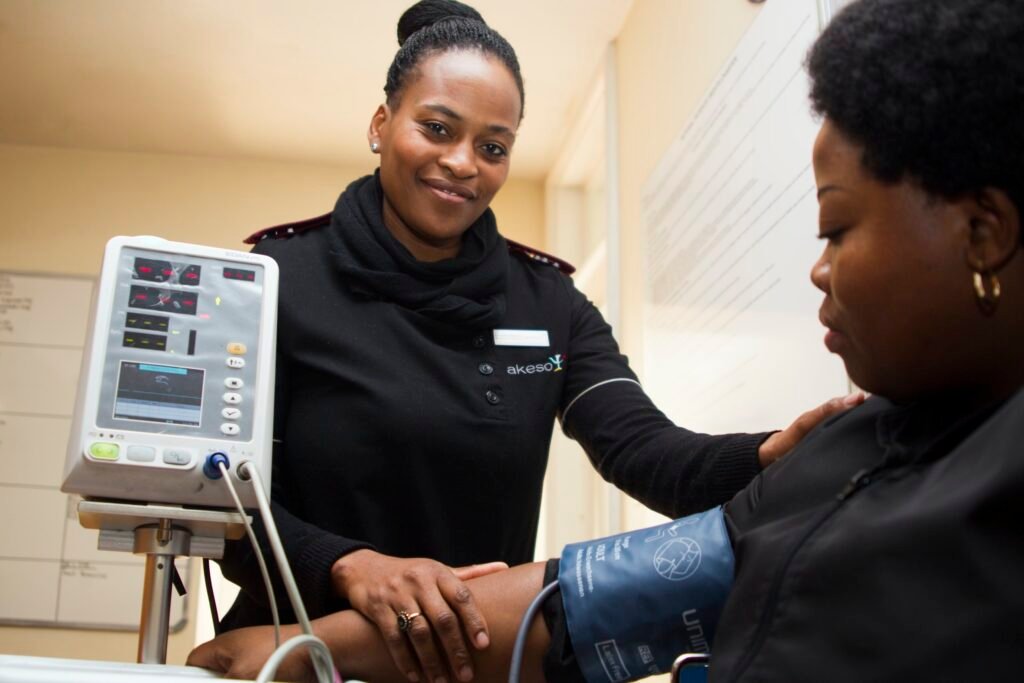
Why worry?
A myocardial infarction (MI), or heart attack, is a medical emergency that requires immediate intervention to minimize heart damage and increase survival chances. However, it is crucial to understand that optimal care for MI patients doesn’t stop at the hospital.
After the acute phase, a continuous and well-monitored long-term management is essential to avoid future complications and improve the patient’s quality of life.
In this blog, we will explore how the management of MI progresses from the acute phase to long-term care to raise awareness about the importance of medical follow-up even after the initial treatment.
Acute Phase: A race against time
As soon as heart attack symptoms appear, quick action is vital. Time is a critical factor in limiting heart damage. The faster blood flow is restored to blocked arteries, the better the chances of recovery.
The goals of acute-phase management are:
- Rapid restoration of blood flow: Once at the hospital, medications or immediate procedures like angioplasty (opening blocked arteries with a stent) or sometimes thrombolysis (clot dissolution) are used to restore blood flow.
- Patient stabilization: This includes intensive monitoring of heart rhythm, blood pressure, and breathing to prevent immediate complications like arrhythmia (irregular heartbeats) or cardiogenic shock.
- Pain relief and reducing oxygen demand: Patients are often given oxygen, nitroglycerin to improve circulation, and medications to alleviate chest pain.
Myocardial Infarction: Immediate post-hospital phase - follow-up and cardiac rehabilitation
Once the acute phase is managed, care does not end. Recovery from a myocardial infarction requires a long-term strategy that includes rehabilitation, continuous medical monitoring, and lifestyle changes.
Here are the key steps following hospital treatment:
Cardiac rehabilitation:
- Cardiac rehabilitation is a program supervised by healthcare professionals aimed at improving heart health through tailored physical exercises, dietary education, and risk factor management.
- This program also includes educational sessions to help patients better understand their condition and adopt preventive behaviors to avoid future heart attacks.
- The goal is to gradually strengthen the heart muscle while reducing stress on the heart.
Regular medical follow-up:
- After hospital discharge, regular medical follow-up is crucial for monitoring the patient’s recovery. This includes tests to assess heart function, adjusting medications, and early detection of complications.
- Prescribed medications may include blood thinners, beta-blockers to slow the heart rate, statins to lower cholesterol, and ACE inhibitors to help prevent heart failure.
Managing risk factors:
- Patients who have survived an MI are at a higher risk of another heart attack. Therefore, managing risk factors like high blood pressure, diabetes, high cholesterol, and smoking is essential.
- Adopting a healthy lifestyle becomes a priority: eating a balanced diet, engaging in regular physical activity, reducing stress, and avoiding risky behaviors like smoking.
Long-term objective: prevent recurrences and improve quality of life
Even though the acute phase has passed, the risk of a recurrent myocardial infarction remains high. Long-term management is needed to prevent future episodes and improve quality of life.
Here’s what’s crucial for MI patients after the acute phase:
Medication adherence:
- It is essential to continue taking prescribed medications without interruption. Many patients feel better after a few months and may be tempted to reduce or stop their treatment, but this can be dangerous.
- Medications like blood thinners, statins, and ACE inhibitors reduce the risk of complications and help protect the heart from further events.
Lifestyle changes:
Lifestyle changes are crucial for long-term heart health. It is recommended to:
- Adopt a heart-healthy diet: rich in fiber, and low in saturated fats and cholesterol.
- Exercise regularly: Moderate physical activity, like brisk walking, is particularly beneficial for the heart.
- Manage stress: Relaxation techniques, meditation, and other activities that help reduce stress play a key role in preventing recurrences.
Symptom monitoring:
- Patients should be vigilant about any signs of deteriorating health, such as recurring chest pain, shortness of breath, palpitations, or unusual fatigue, and seek medical attention as soon as possible.
Ongoing education:
- Awareness of heart health doesn’t stop after the initial rehabilitation. It is critical for patients and their families to be continuously informed about best practices for managing the disease, the latest medical advances, and treatment options.
The key components of cardia rehabilitation after a heart attack

Remember
There is a path to a healthier heart – Up to you to make the right choices
Managing myocardial infarction is a long-term process that begins as soon as the first signs of a heart attack appear and continues well after hospital discharge.
Thanks to modern medicine, many people can survive a heart attack and live fulfilling lives, as long as they follow a strict treatment plan, participate in cardiac rehabilitation, and maintain a healthy lifestyle.
Regular follow-ups and proper management of risk factors, coupled with education and support from healthcare professionals, are key to preventing future episodes and improving quality of life.
The care of MI patients doesn’t end with the acute phase: it is continuous and evolves with the patient, ensuring medical support at every step of the recovery and prevention process.


